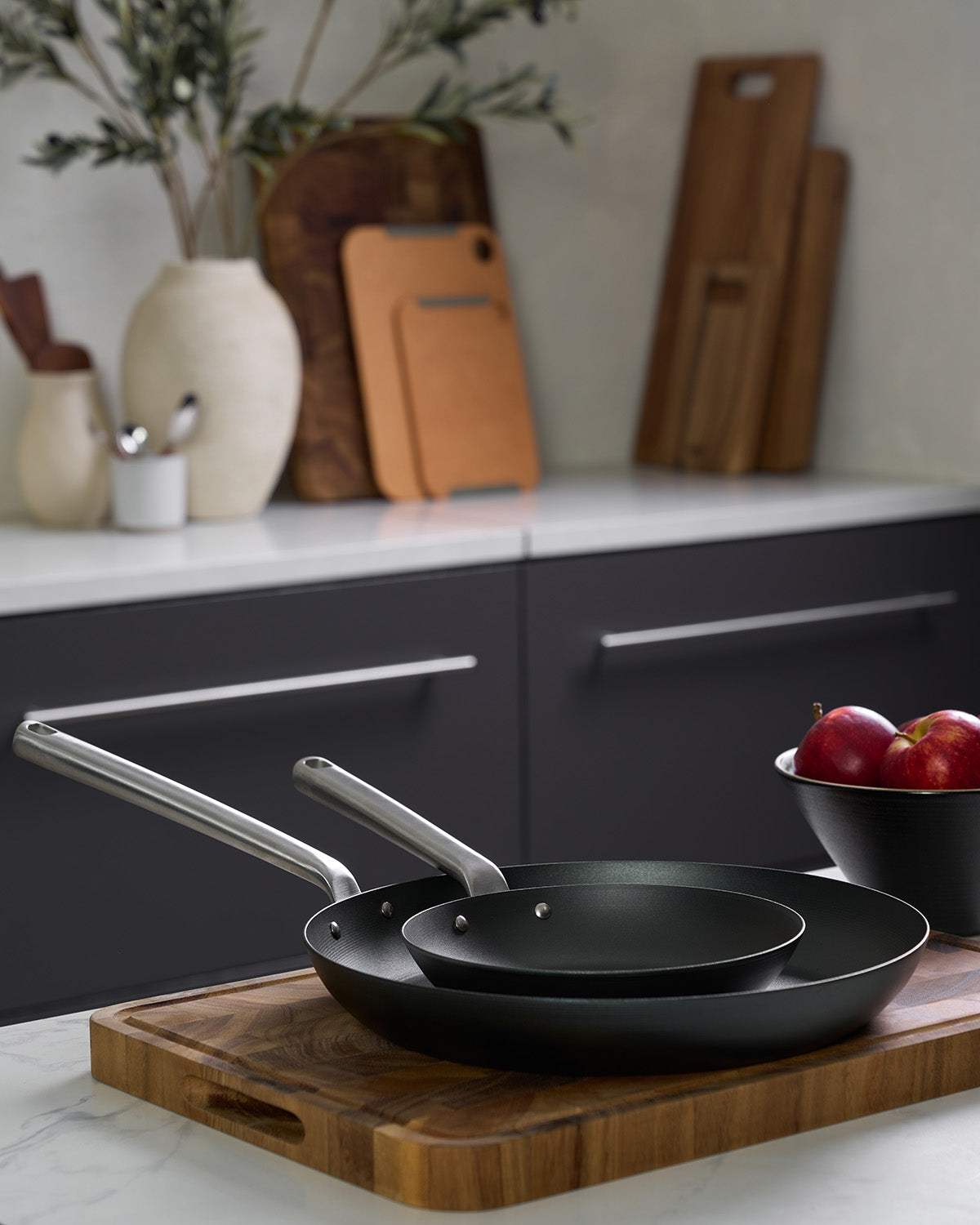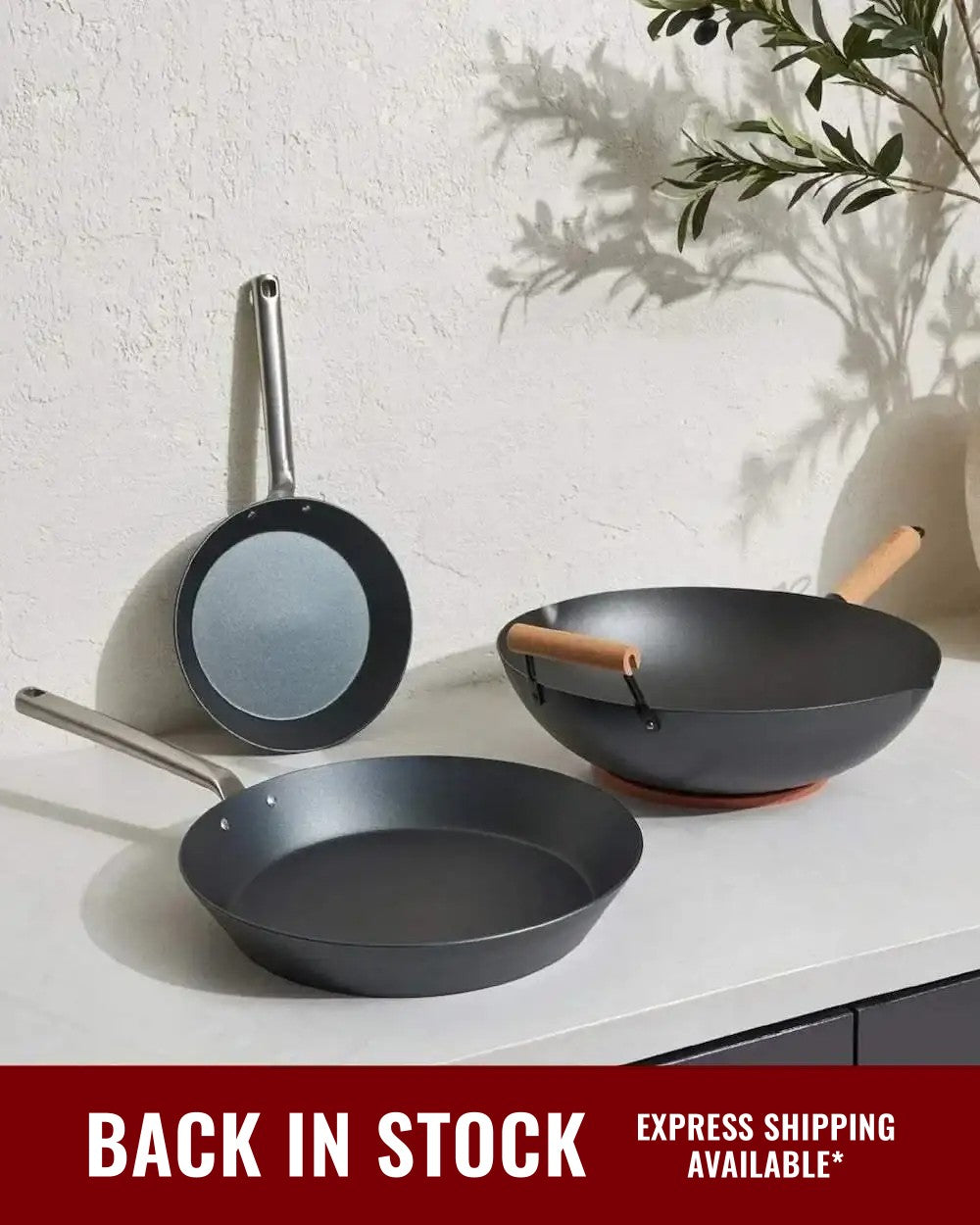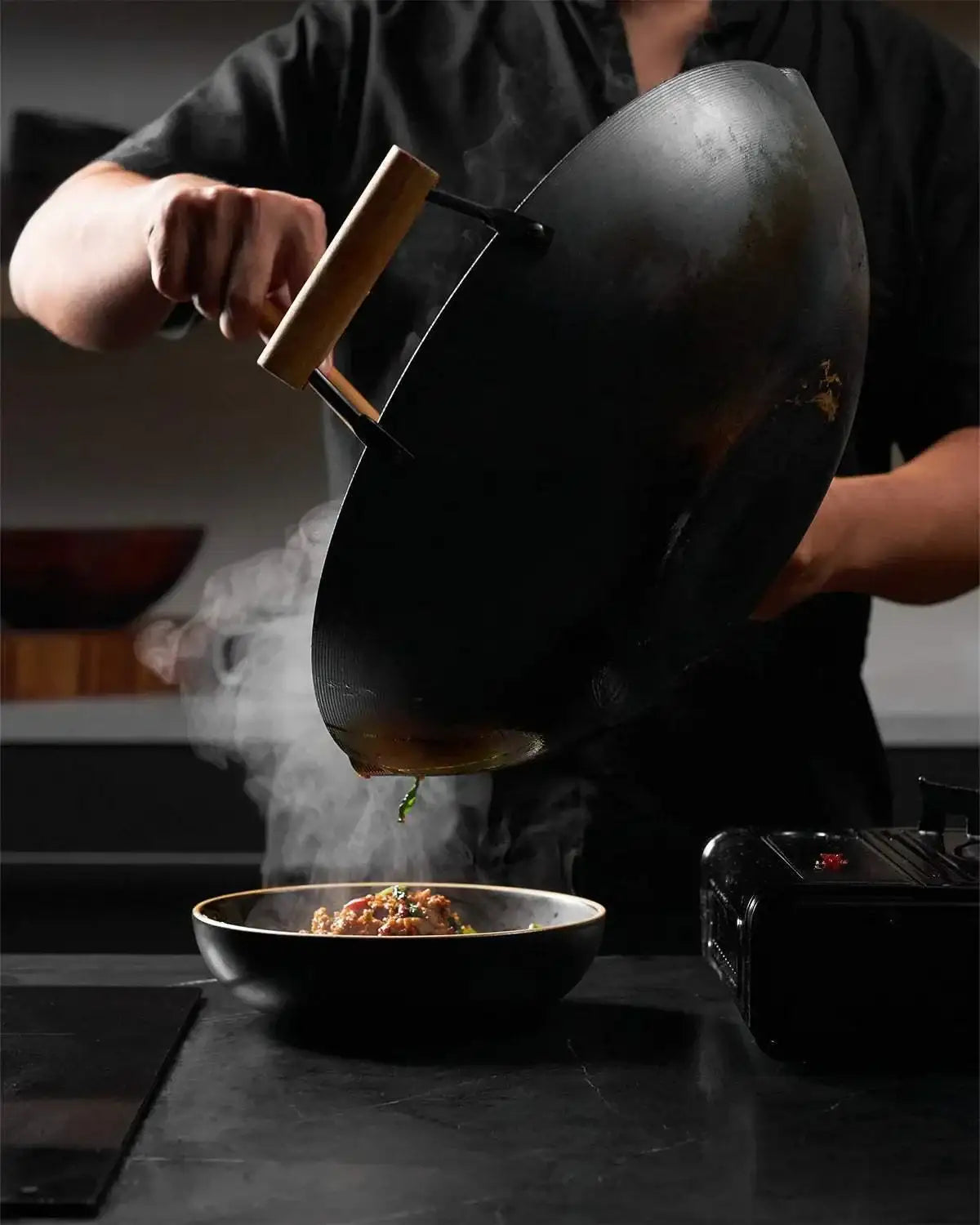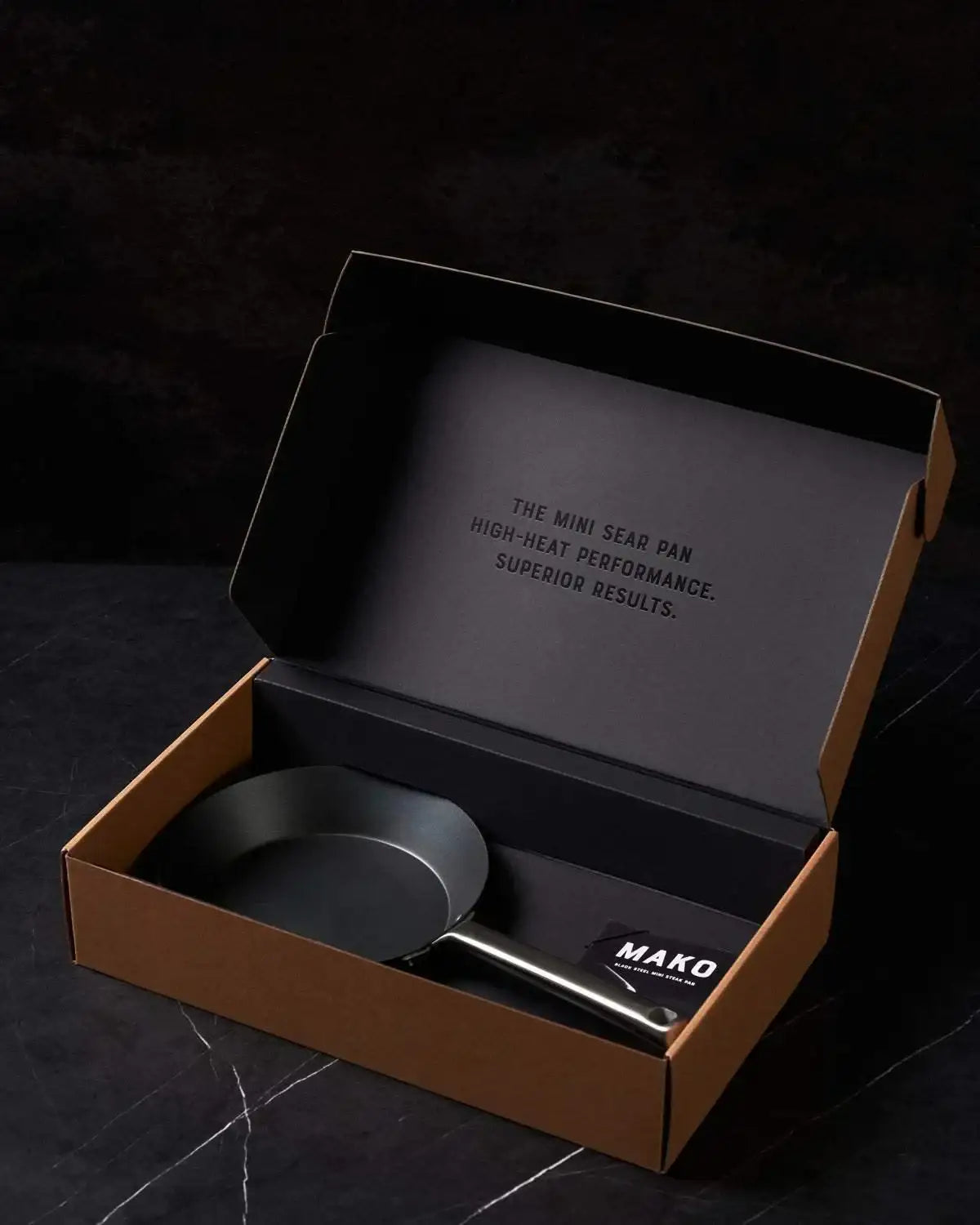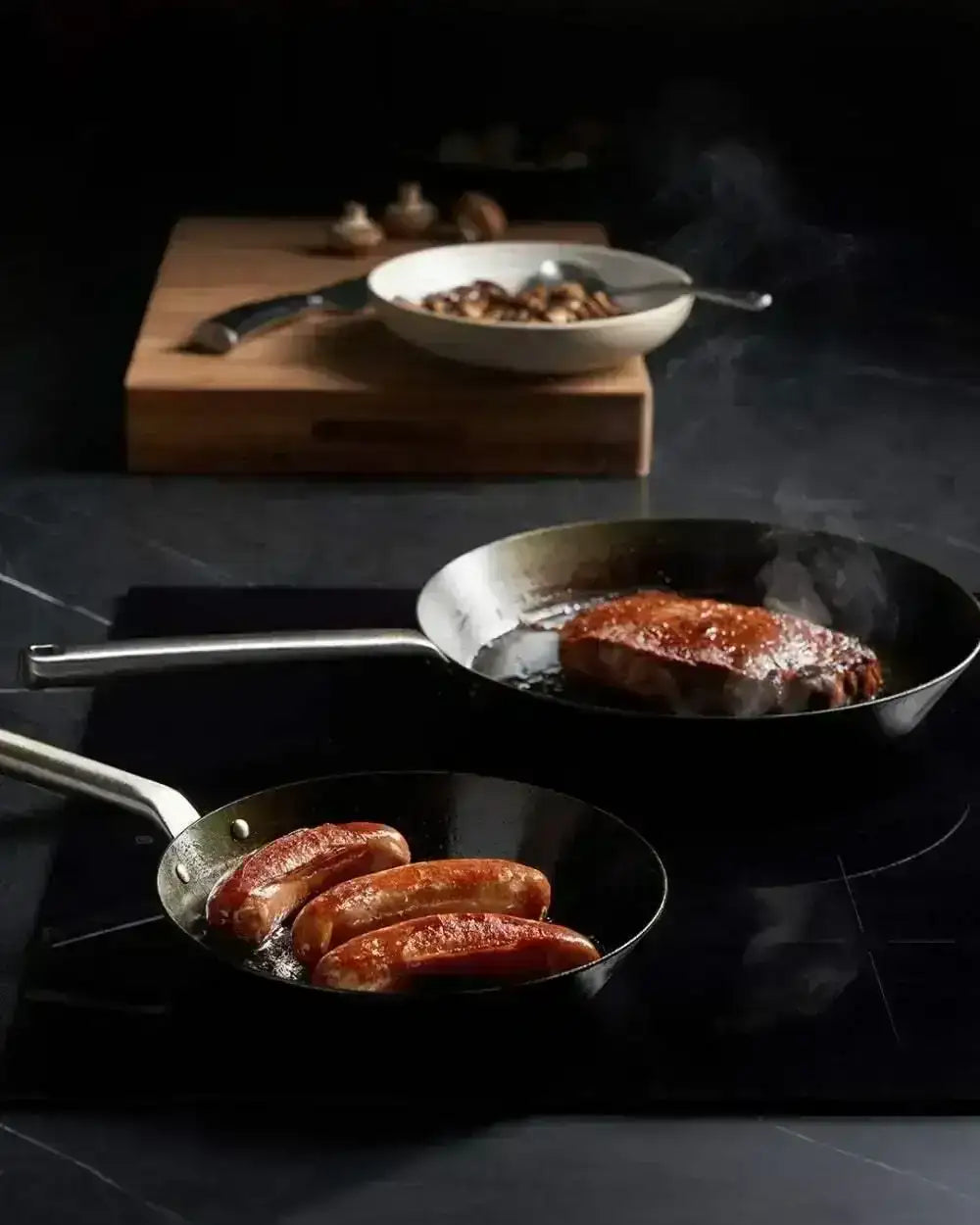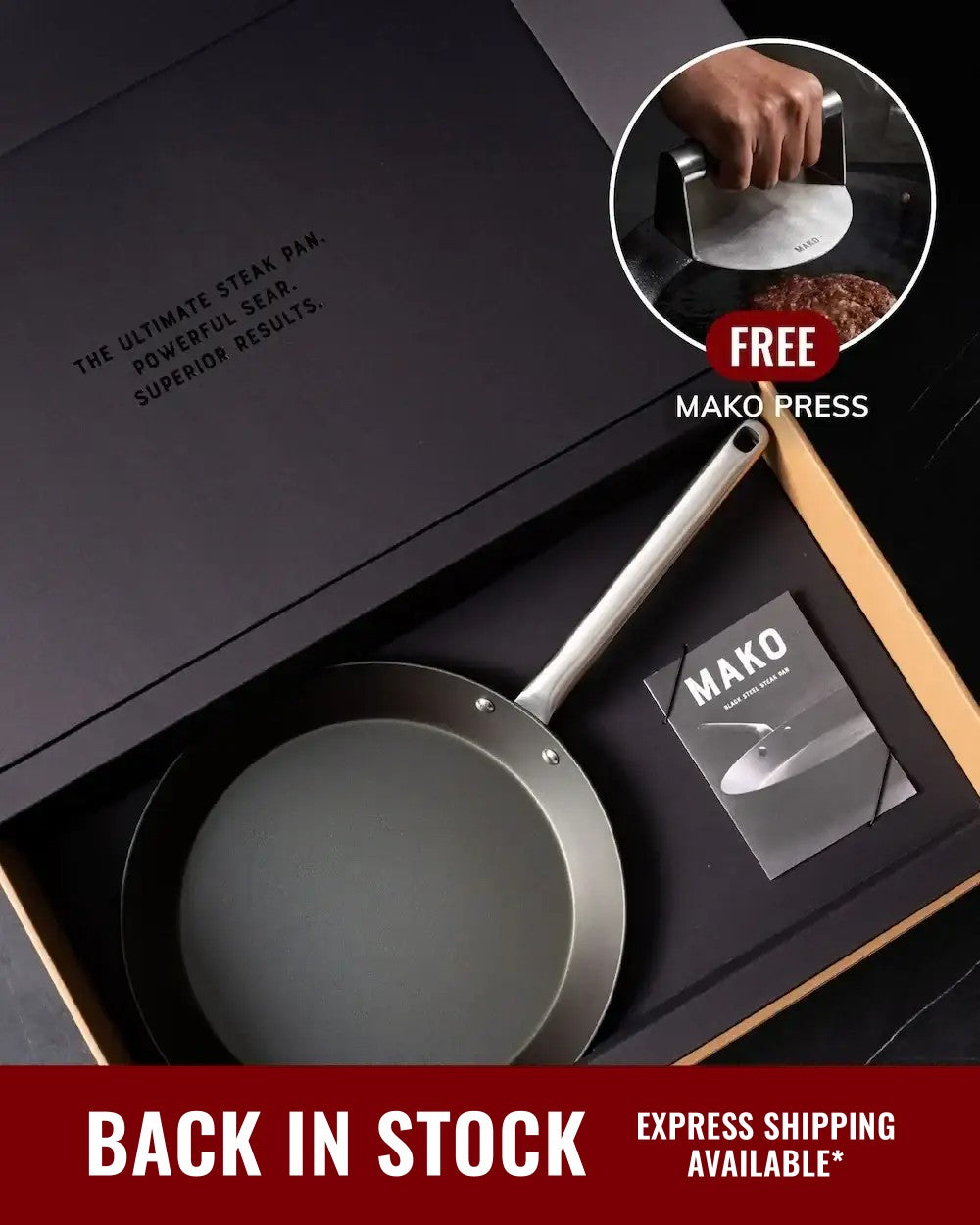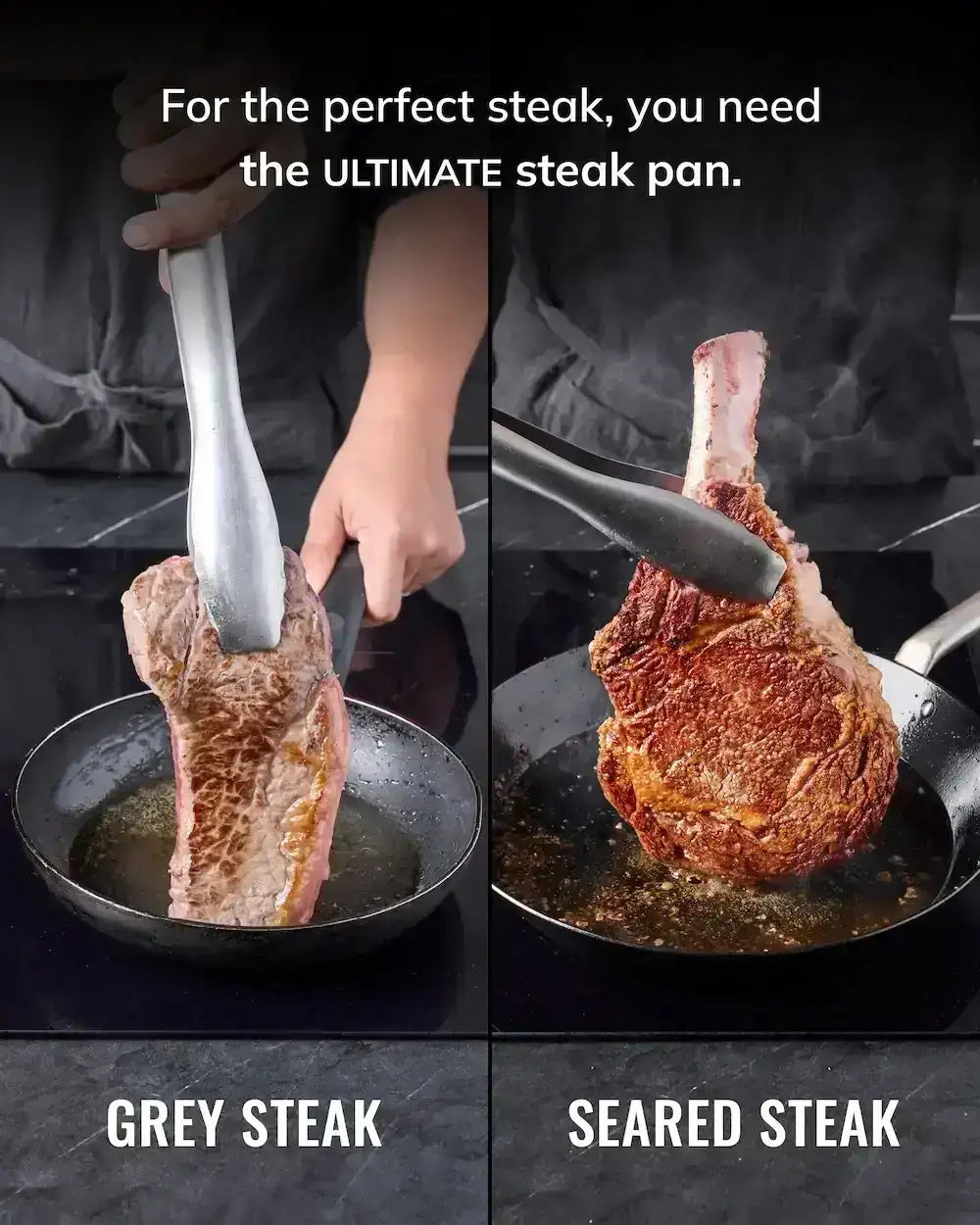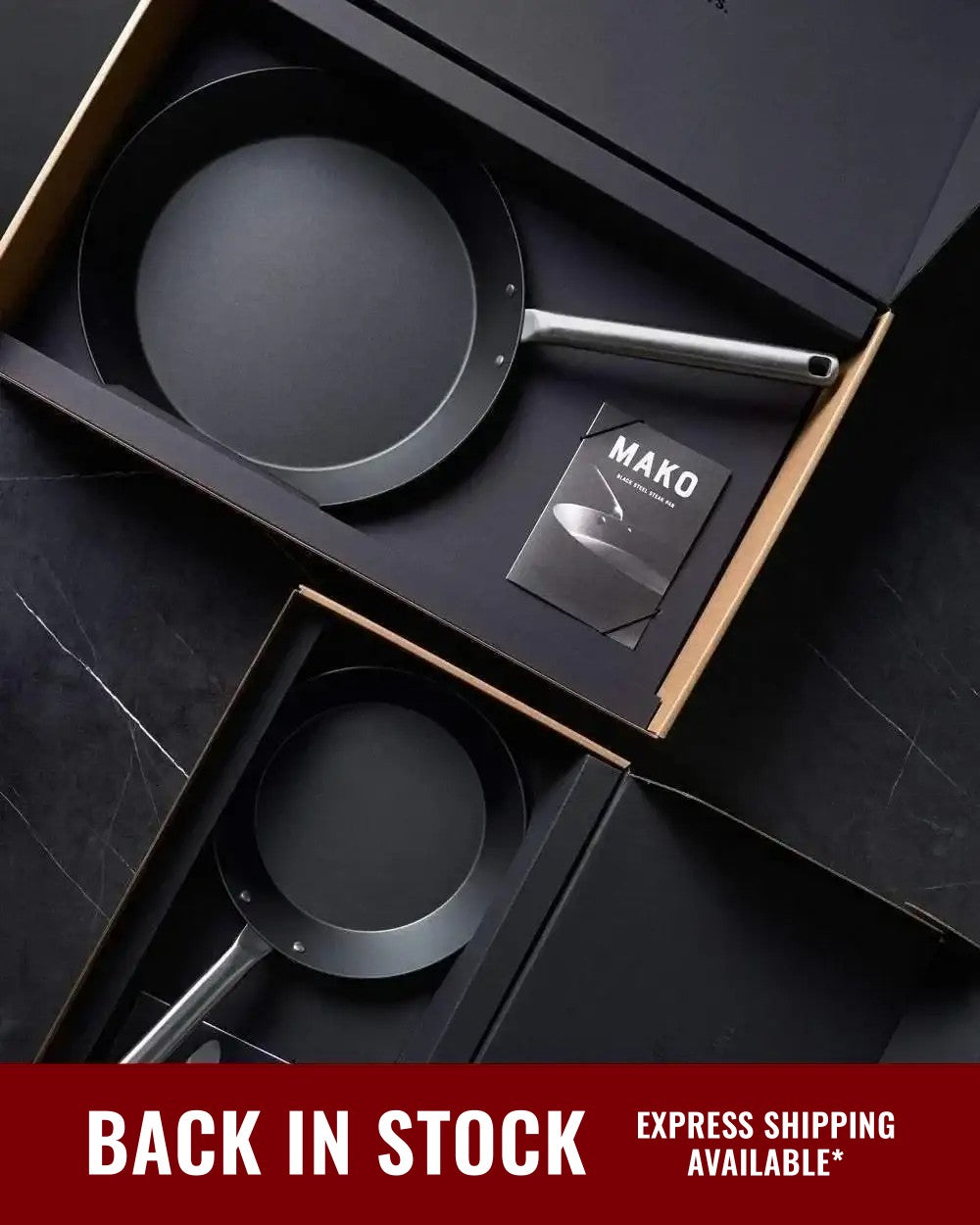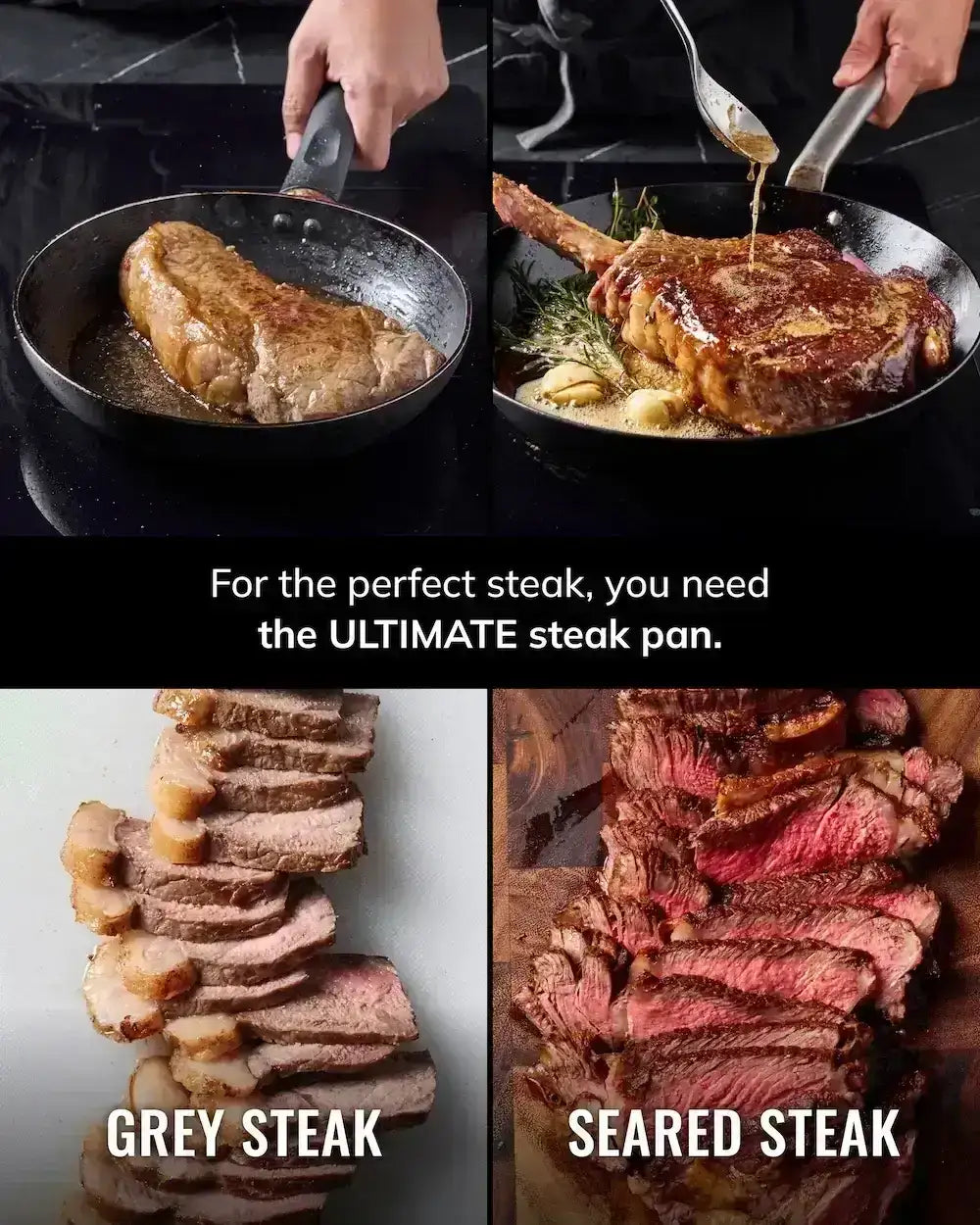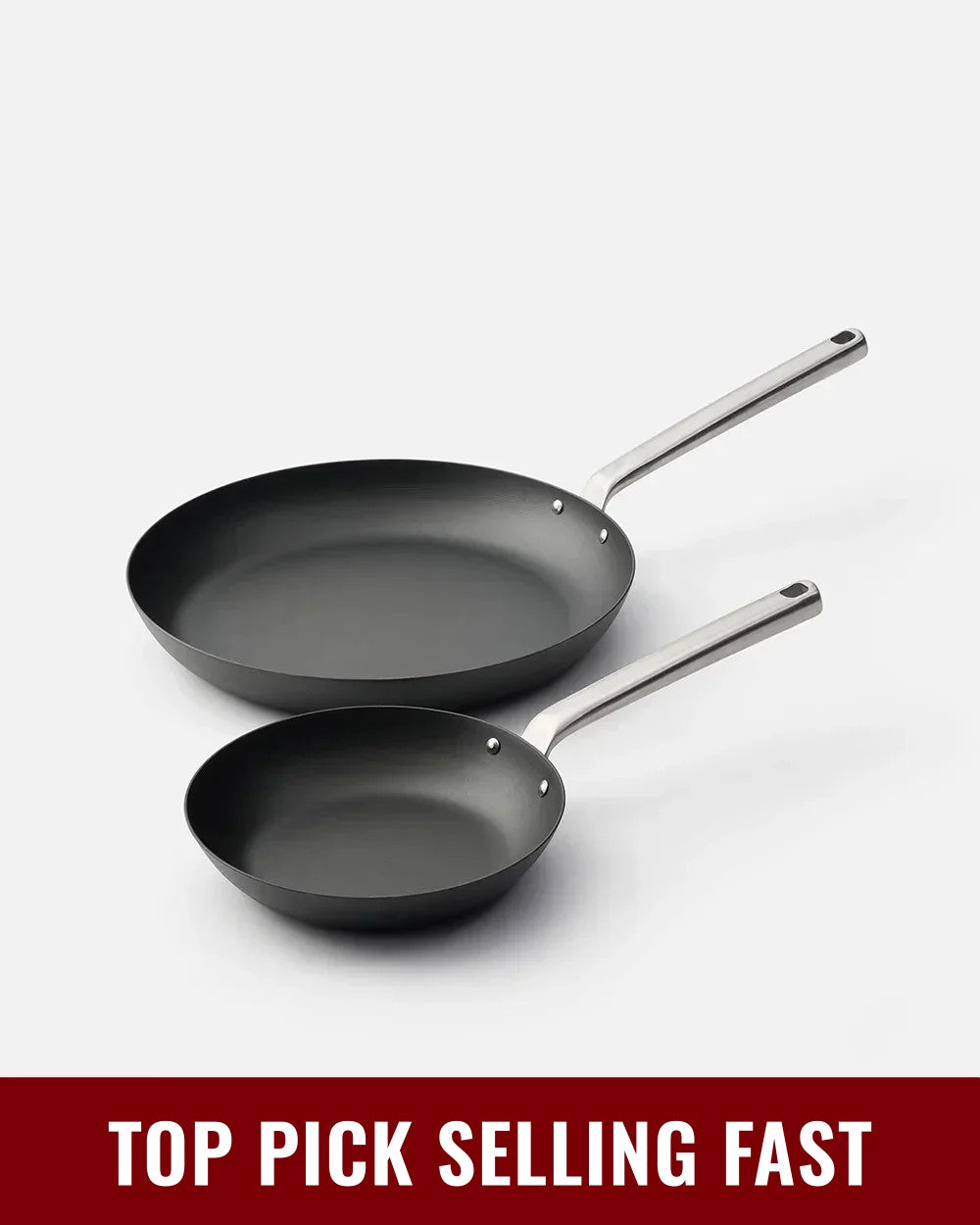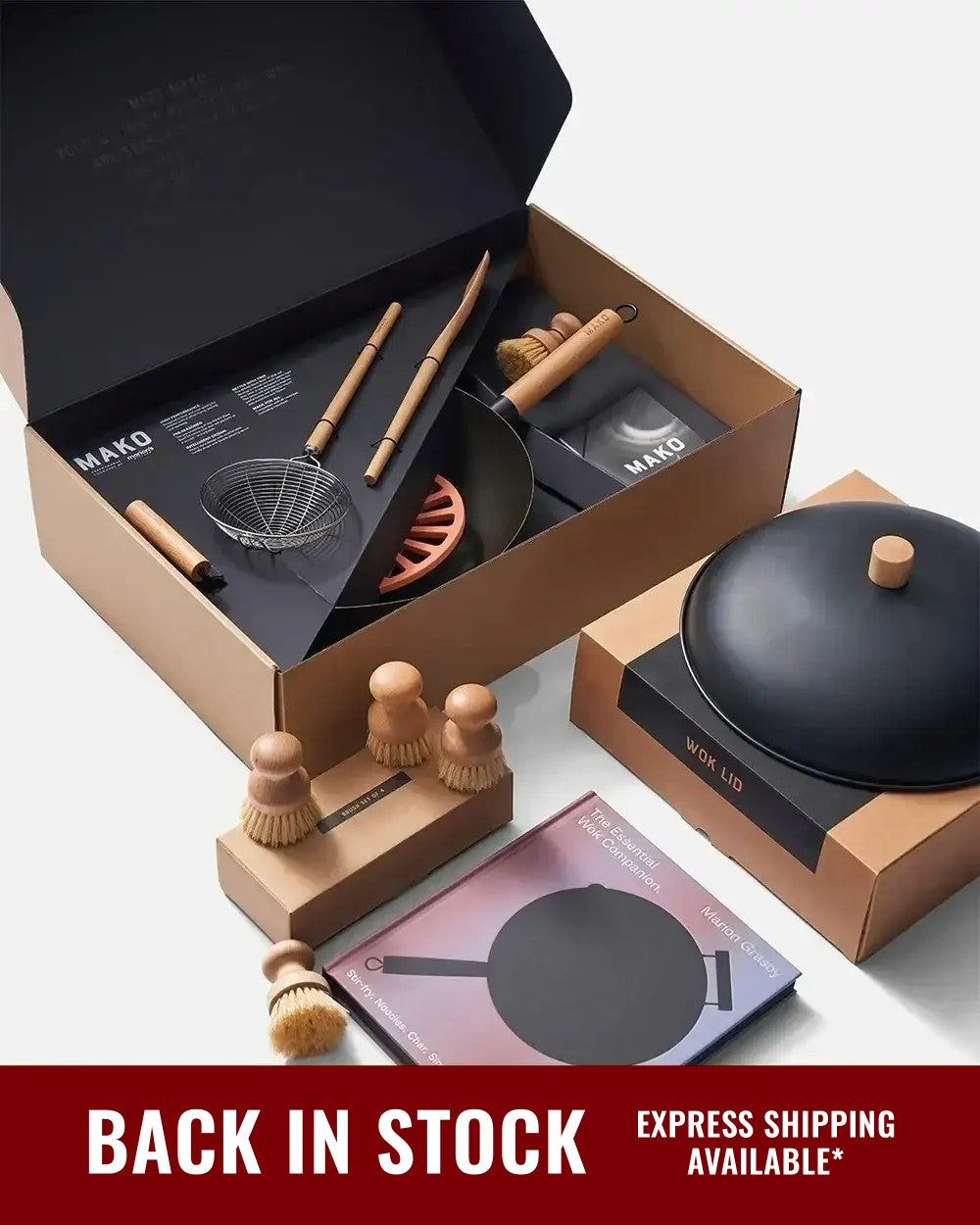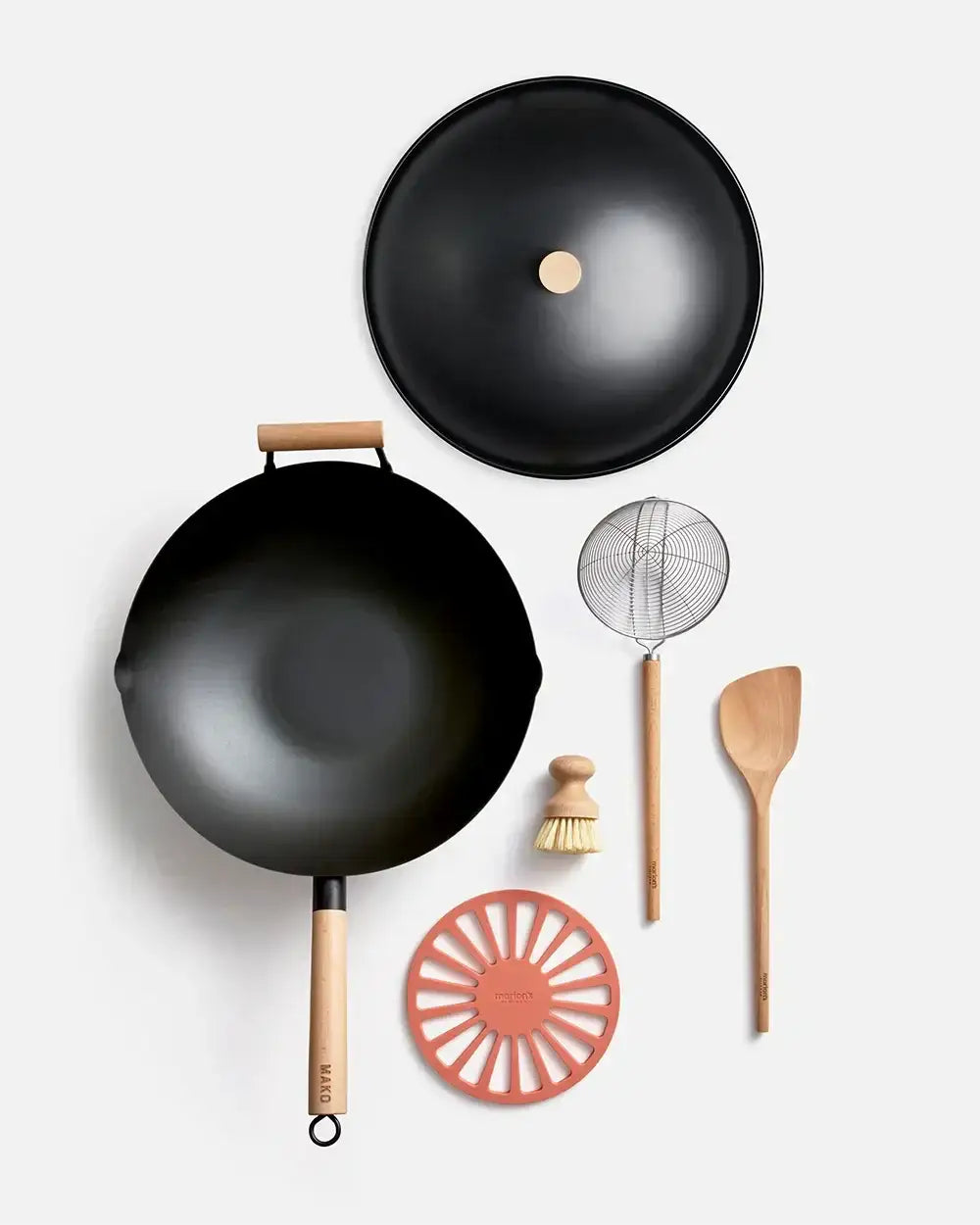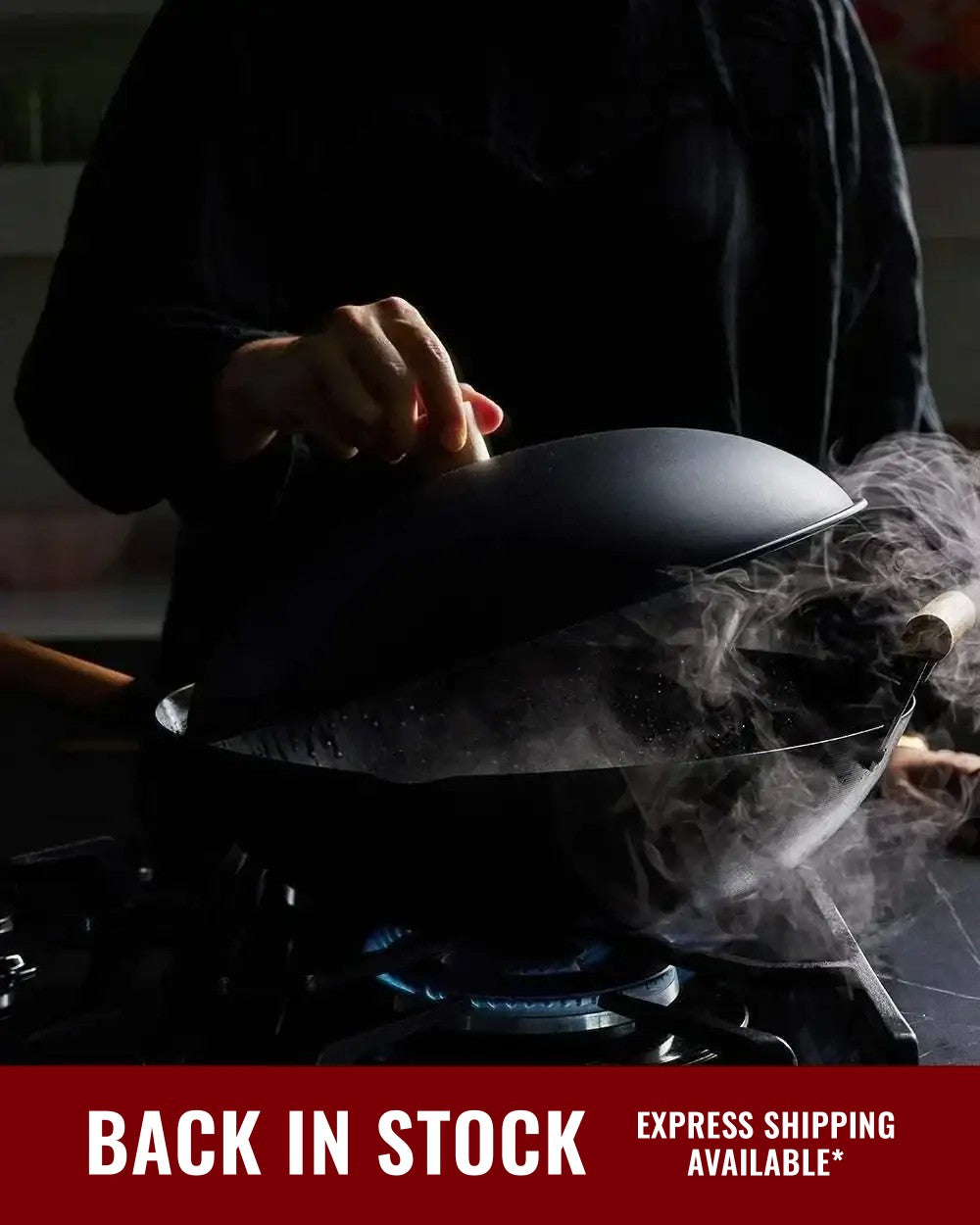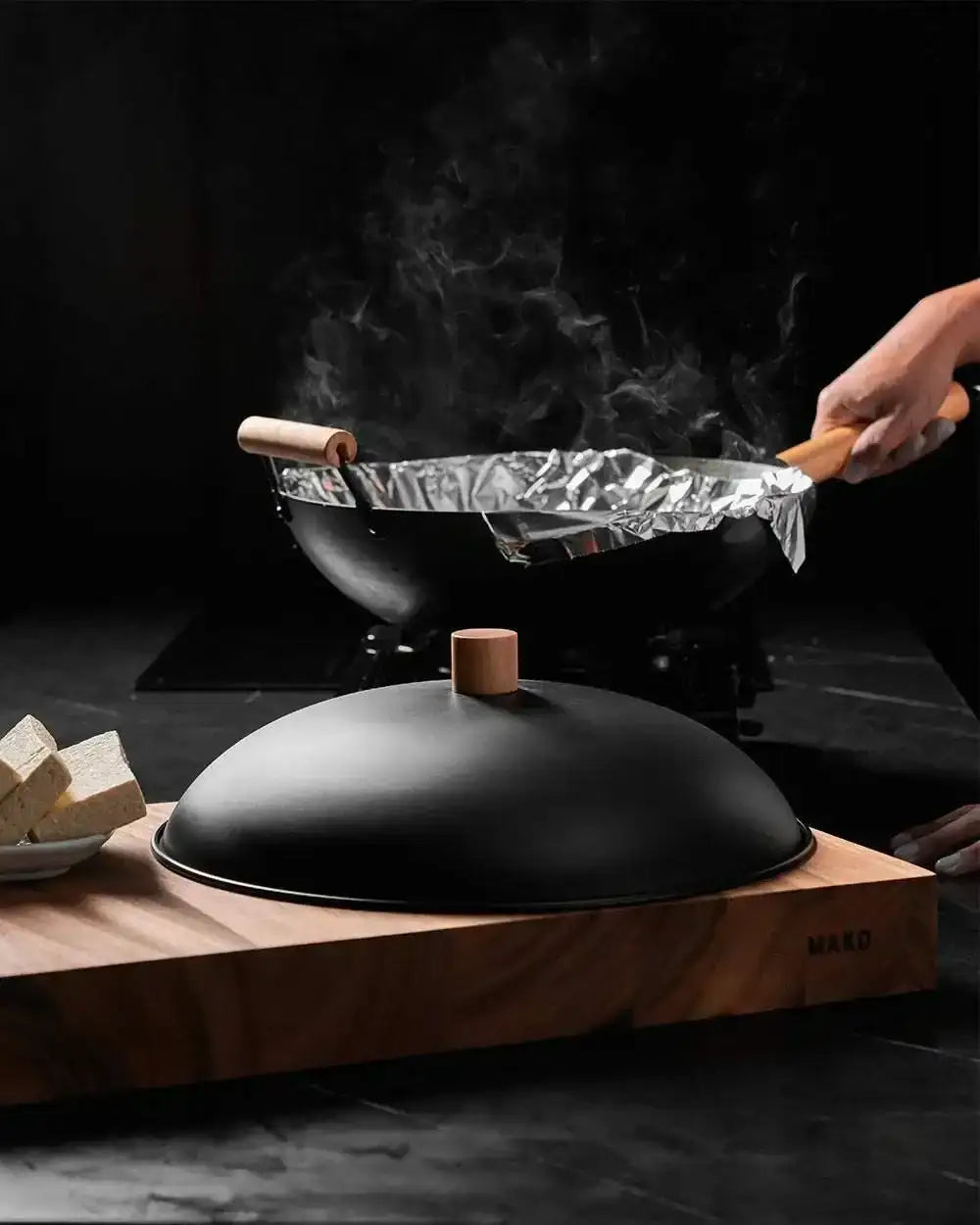
How to get rid of rust on black steel pans
Rusty black steel pans? It can happen. Despite best efforts, sometimes carbon steel can rust if it’s been left in humid environments for a length of time, or if it isn’t dried and re-seasoned after use. Luckily, it’s easy to remedy and restore a pan to its former glory.
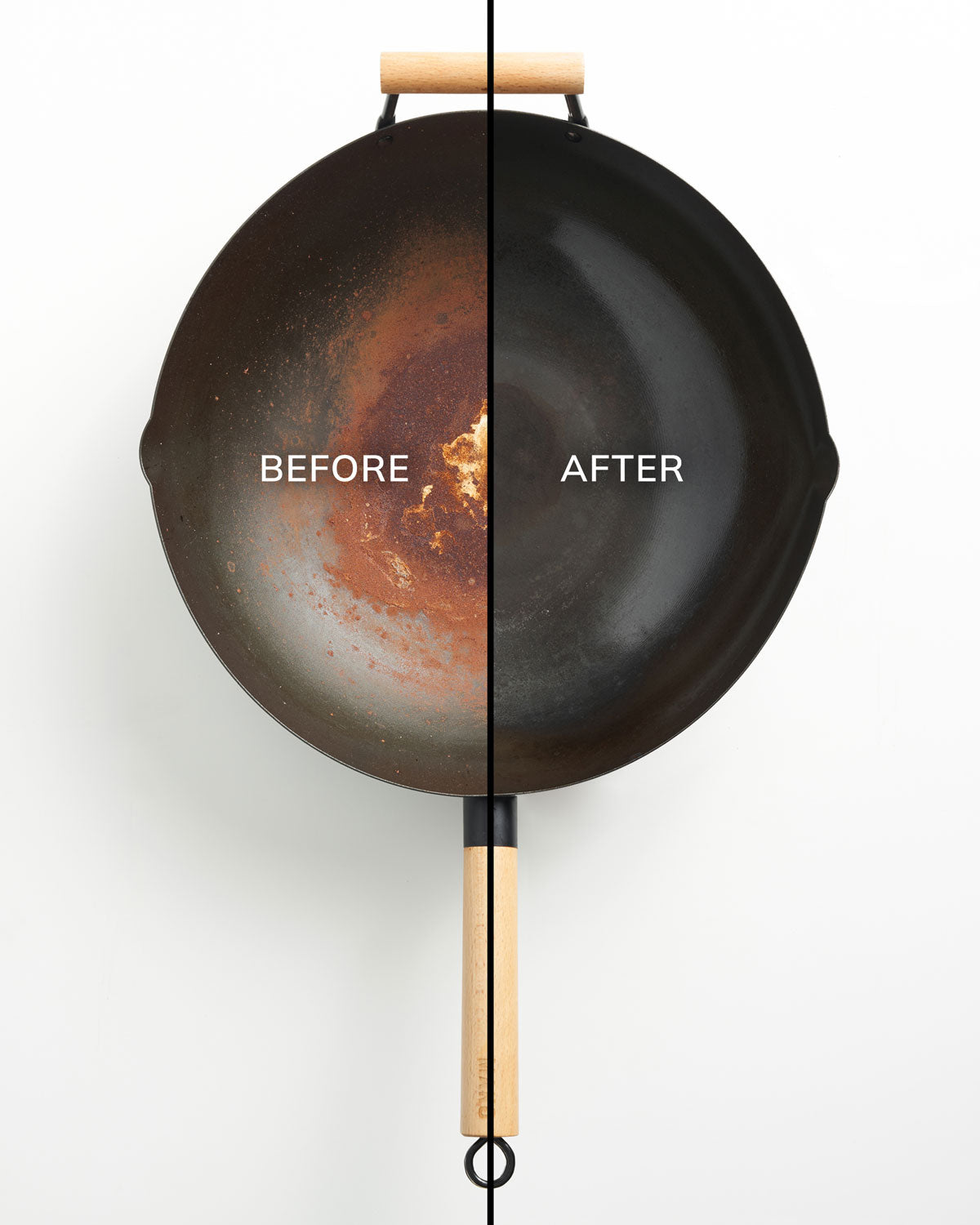
How to remove rust from black carbon steel
There are a few methods for removing rust and which you use totally depends how bad it is. Whether it’s small amounts or large, you should first rinse your pan to remove any loose rusty bits.
Next, scrub the rusted areas firmly with a scouring pad, using circular motions; if it’s surface rust only, this will remove it. If the rust is gone, then great. You’re good to go and can skip straight to the washing and re-seasoning steps below. If not, it’s time to dial things up
When the rust is really persistent use baking soda (bicarb soda)
- Grab some baking soda, and mix a ⅓–½ cup of it with enough water to make a thick paste.
- Spread this paste generously over the rust patches, then let it sit for 20 minutes. The alkaline in the soda helps break down rust.
- Use an abrasive scrubber like steel wool, then work it like crazy to get that rust off.
- Rinse the pan well to get rid of all the paste and rust residue.
Baking soda didn’t work? Time to get savage.
Bring on the acid! If that rust just won’t budge, it’s time for the big guns.
- Add enough white vinegar to the pan to just cover all the rusted parts.
- Leave to soak for 1-2 hours for the vinegar to loosen the rust.
- Pour out the vinegar, then get in there with a scrubber to dislodge all the rust.
- Rinse the pan really well to flush out all the loosened particles.
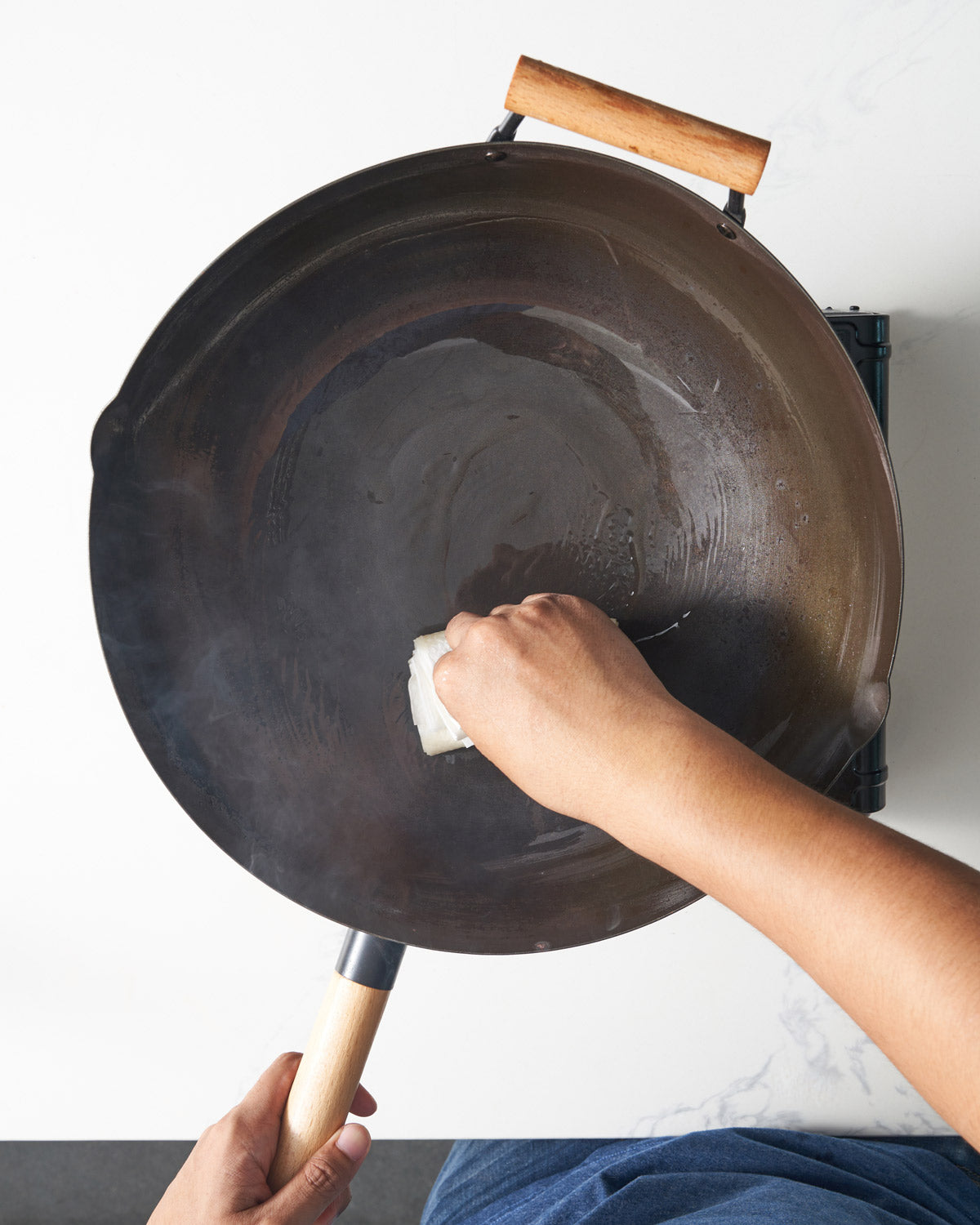
The rust is gone from your pan. Now what?
Grab your pan and wash it thoroughly using mild detergent and warm water. Then, rinse it well to get rid of any residue. Dry your pan completely. This is really important. Use a soft cloth or paper towel to make sure absolutely no moisture remains.
Now, you can re-season your pan.
How to re-season your carbon-steel pan
Place the pan over medium heat, or pop it into a 180°C (350°F) oven, and leave for 10-15 minutes. This will get rid of any residual moisture. It needs to be 100% dry.
1
Heat your pan on your cooktop on a medium heat until you see light smoke appear.
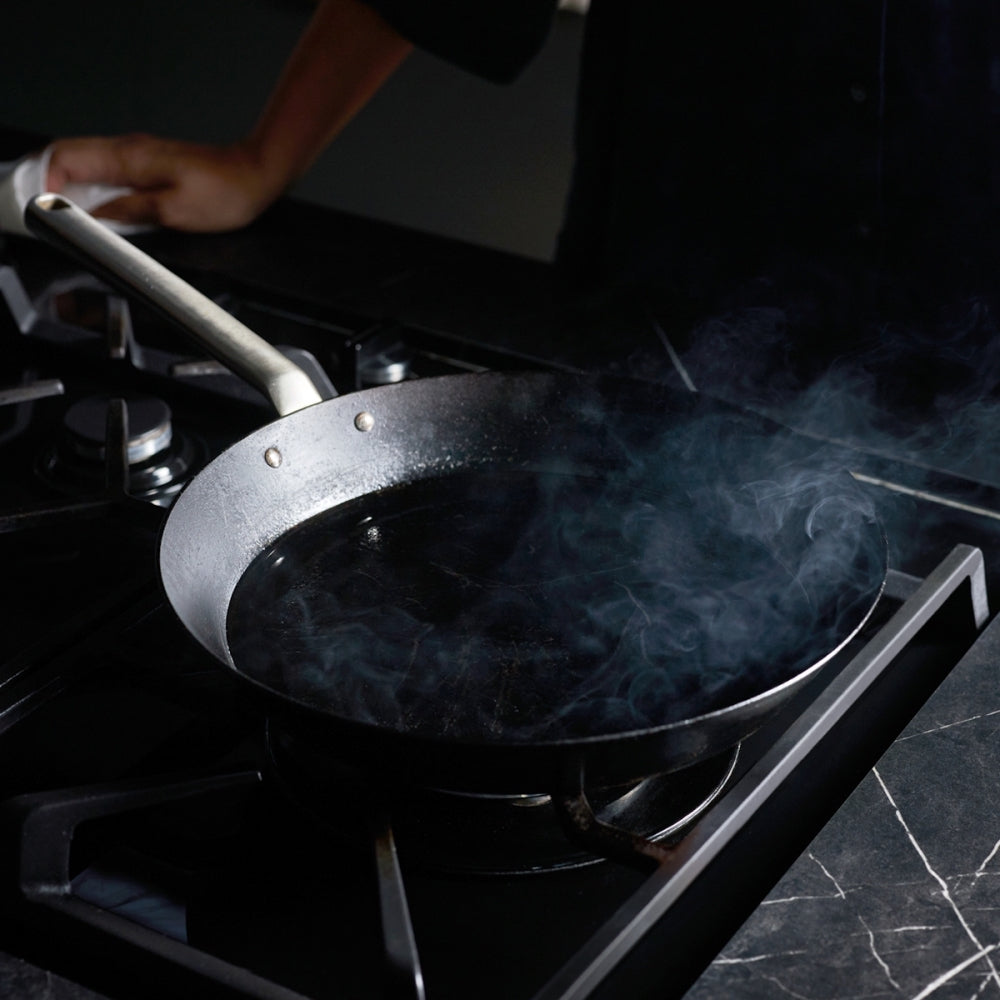
2
Add two teaspoons of vegetable oil to your hot pan.
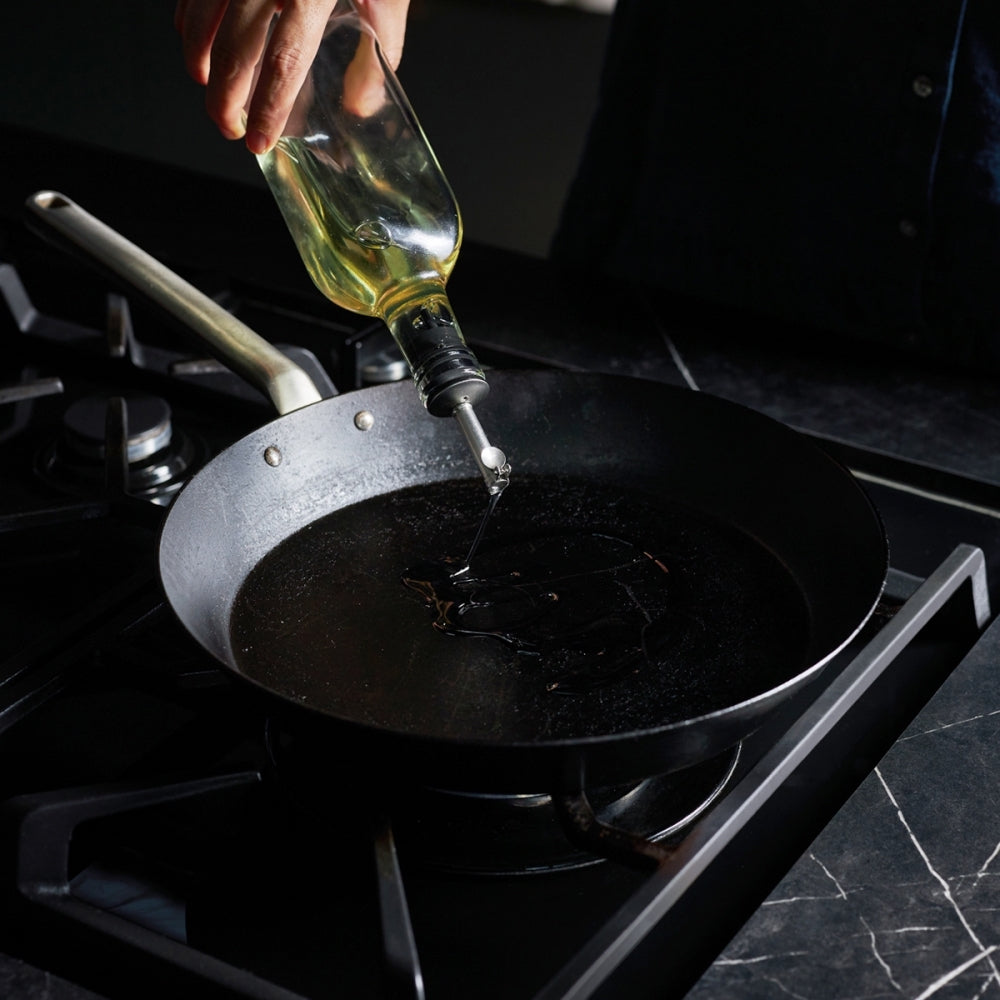
3
Use paper towel to (carefully) wipe the oil over the interior surface before taking your pan off the heat.

Maintenance tips for avoiding rust on carbon steel pans
- Each time you use your pan, cool it before cleaning it with warm water, a soft brush or sponge and mild detergent.
- Once clean, rinse the pan well and dry it thoroughly with a tea towel or paper towel. Never leave it soaking in water.
- Heat your pan over medium heat until you see light wisps of smoke appear.
- Add two teaspoons of vegetable oil to your hot pan.
- Use paper towel to (carefully!) wipe the oil over the interior surface before taking your pan off the heat.
- Store your wok or frying pan in a dry place, being careful not to stack other pans directly on top of it, or using a protector between them if you do.
MORE READING
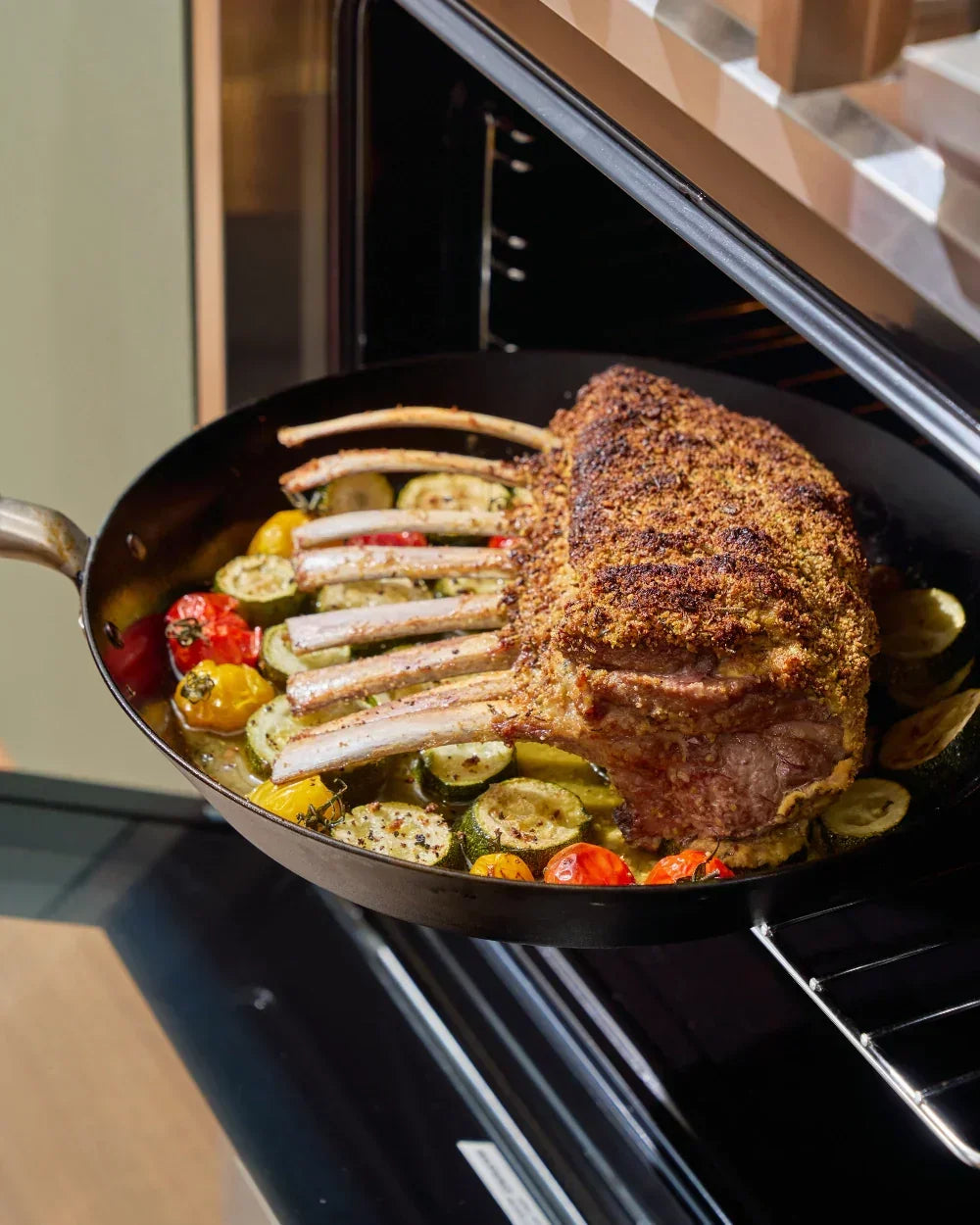
Pistachio Crusted Lamb
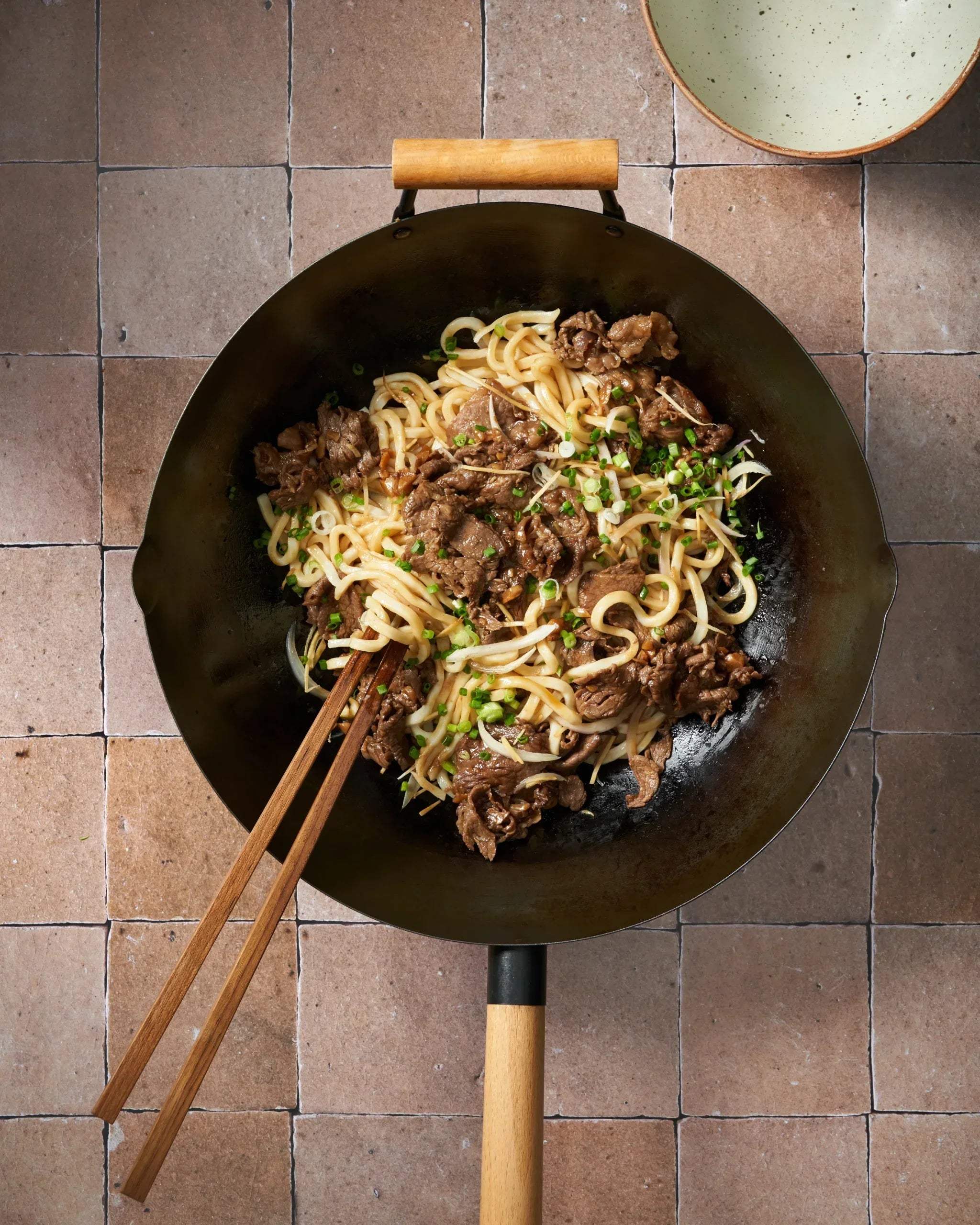
Mongolian Beef Udon Noodles
